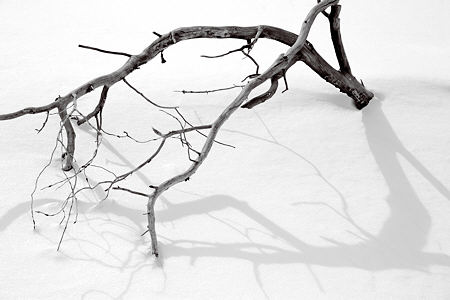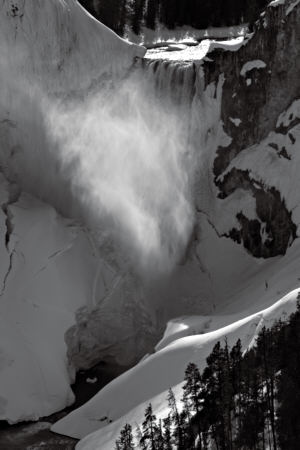Posted by Steve Durbin on June 1st, 2009
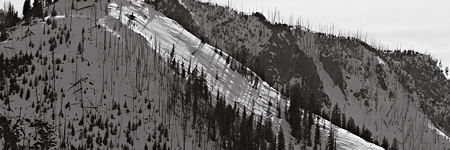 1
1
My day in Yellowstone last month was a long and varied one (see previous posts one, two, three). As I was leaving the park along the Madison river (almost the longest in the U.S.), I stopped occasionally to photograph the line of mountains on the opposite side of the valley.
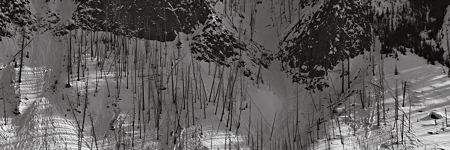 2
2
As I was doing this, I had in mind the images from the month before of the landscape by Tepee Creek (post here). I was hoping to catch some of the rhythm, perhaps even musicality, that I found in both places. I’ve nurtured such a poetic and mostly unrealized hope since I read about photographer Michael Smith’s epiphany with sonograms, like the one below of a hermit thrush. Smith was inspired by the beauty of such sonograms in creating some of his wide landscapes. (Though it’s worth pointing out that Smith’s wife, Paula Chamlee, in her own way, succeeded as well or better.)

more… »
Posted by Steve Durbin on May 16th, 2009

I just visited the Walker Art Center in Minneapolis, where I saw, among other things, a couple of Rothko paintings and a Barnett Newman. Maybe that’s why this installment of the continuing Yellowstone day is more colorful than previous ones (see parts one and two).
more… »
Posted by Steve Durbin on May 6th, 2009
Continuing my recent Yellowstone visit after leaving the geyser basin, I headed for for the Canyon area. In the past I’ve tended to focus on the magnificent falls there. This year, extra deep snow made access to the best locations difficult (not to mention forbidden, though that’s of lesser concern). I spent my time instead looking at the steeply sloping walls of the V-shaped canyon carved by the river.
 1
1
more… »
Posted by Steve Durbin on April 27th, 2009
I drove through parts of Yellowstone a week ago, just a day after the Park (as it’s known locally) opened to automobiles. (I had been hoping to bike in the car-free weeks before that, as I normally do, but the weather was uncooperative.) Despite my regular visits, and posts to this blog, I realized I’ve never shown any photographs of the thermal features for which Yellowstone is justly famous. I have made a few before—surprisingly few—but somehow they never appealed much to me. For some reason I can’t put my finger on, this time felt different, and there are several images I’m willing to publish.

more… »
Posted by Steve Durbin on June 17th, 2008
Old musings on recent photography have led to the resurrection of a completely different series I thought I’d given up on. Just last week I deleted a draft from March that I had started in excitement, but never finished because I couldn’t make the pictures work.
The thoughts were on Japanese aesthetics, and the abandoned series was a rather minimalistic one, captured in all of 15 minutes near the start of a Yellowstone outing during which I later busted my aging ski gear, cutting the trip short (I managed to limp out with frequent falls, discovering in the process that it’s not easy getting up from soft, deep snow when your skis are higher than you are).
more… »
Posted by Steve Durbin on April 17th, 2008
While reworking and sequencing my Winter Water project, I realized that, for a photographer as well as a physicist, snow, ice, and liquid are very distinct states of water, with distinct texture, tone, and shape. Perhaps because those photographs had no sky, I managed to completely forget about the vaporous state. Last Monday, however, I was vividly reminded of that glorious phase while biking through Yellowstone. Roads were clear but cars not yet allowed, so I had it almost to myself: only a half dozen other bikers all day, and a few service vehicles per hour. Fortunately I had a late start, so by the time I reached the Lower Falls it was well on in the afternoon. The westerly light left the falling water in shade while illuminating the mist.
more… »
Posted by Steve Durbin on January 8th, 2008
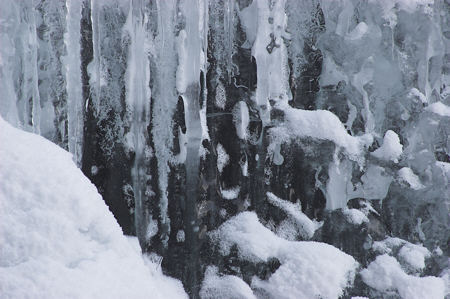
Posts from Sunil and from Jay have described their use of Photoshop manipulations. So I thought I’d show a bit of what happens — or could happen — to one of my images when I process it. To keep it simple, I’ll discuss a single photograph taken last weekend, a close view of a portion of frozen Lost Creek Falls in Yellowstone. Above is the “straight” version, i.e. how it looks when the simplest possible treatment with “no” adjustments is applied. The lighting from the partly blue sky gives it the bluish cast. My usual conversion to black and white, with contrast and brightness adjustment (“curves”) yields the result below. By “usual” I mean usual approach; the actual adjustments are different for each image.
more… »
 1
1 2
2

 1
1
